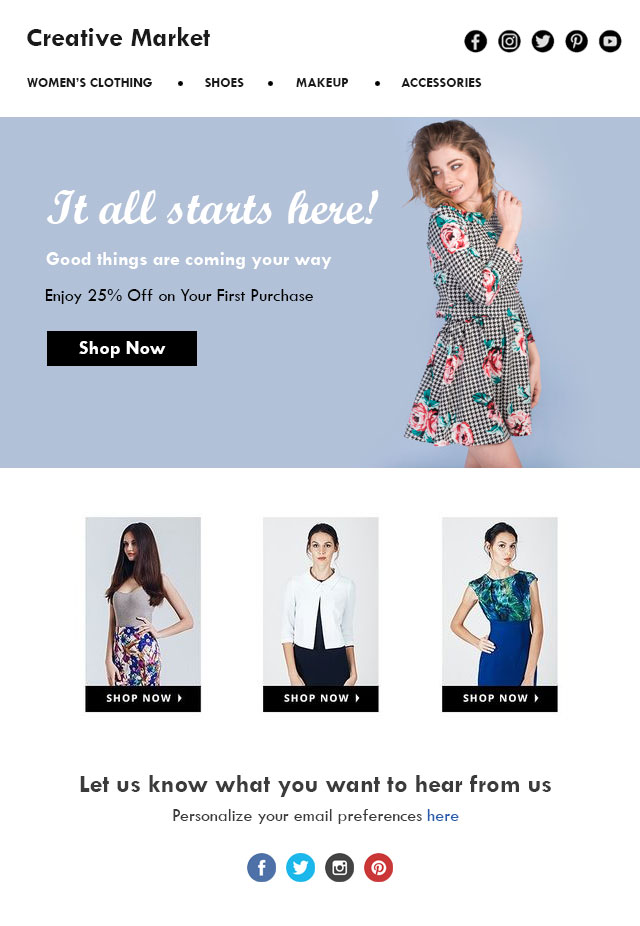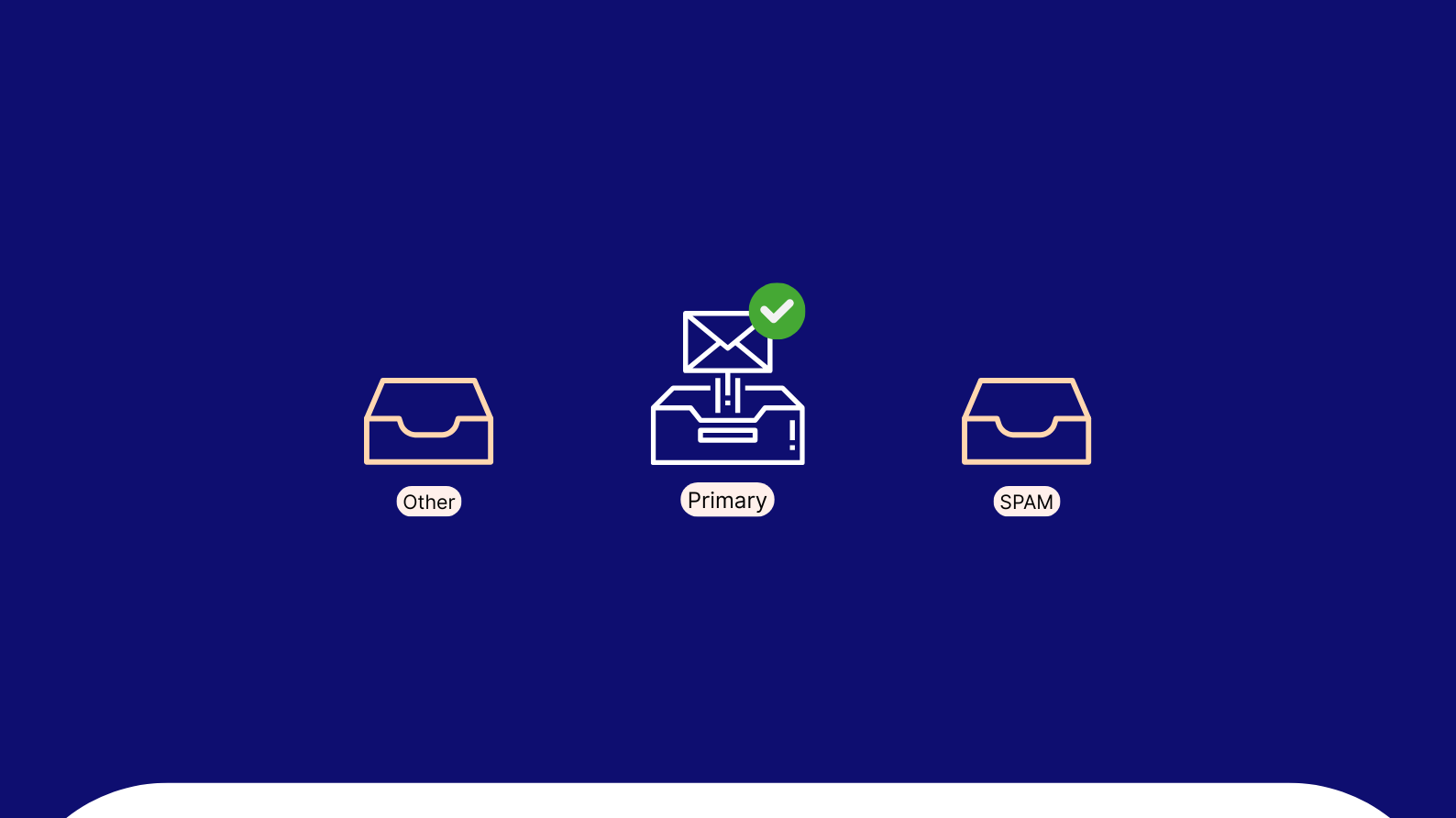In the age of omnichannel marketing, email plays a crucial role in fine-tuning how businesses attract consumers through messaging. But don’t take my word for it. For every $1 you spend on email marketing, you can expect a return of $51 on average. While traditional business emails focus on stone-cold sales, modern-day messages are more person-centric and emotionally relevant. Customers like to connect with the brands they purchase from. And how can a business foster its relationship with customers? — through its values, culture, and communication. This article centers on introducing our readers to some of the potential best practices that might help them optimize their email messages.
| Further reads similar to this: 7 Fresh Ideas to Improve Your Email Marketing |
Segment Your Contact Lists
Segmentation in email marketing is a well- known technique but still overlooked by many marketers. Recent research has revealed that 9 out of 10 marketers do not segment their email database. Now, for those who are getting started with segmentation, here’s how it should be done.
Segment by industry: This applies to you if you run a B2B business. Knowing your subscribers operate in — is a great way to segment your email lists. For instance, someone who operates in Ecommerce is more likely to engage at a much higher rate if they receive email campaigns on merchandising tools. On the flip side, if you operate in a B2C arena, you should consider segmenting your email database by your customers’ preferences and interests.
Segment by company size: Again, if you are involved in B2B, account-based marketing is a great way to improve your email response rates. For example, an email featuring a premium product is most likely to be considered by an established business, while a small business will be better for more economical options.
Segment by buyer journey: Knowing whether your customers are in the awareness, consideration, or decision stage is important. By understanding where their customers stand, brands can draft relevant messages that drive more engagement. The point is a customer considering products similar to yours will appreciate a free trial offer rather than an e-book or white paper research.
Drip Campaigns to Ensure Cohesive and Consistent Communication
Every day consumers are discovering new ways to take control of how businesses interact with them. Unlike regular emails, drip emails give recipients a sense of control over their inboxes. The last thing any of us want to see in our inbox is yet another useless, irrelevant email. This is why drip emails tend to perform better than regular messages. These emails are triggered based on specific actions taken by the customers. The customer receives the exact piece of information he/she expects to receive. A real-time example of email automation is a welcome email that customers received when they register or sign-up or an abandoned cart email campaign triggered every time a customer can’t complete a purchase.

According to Forrester’s research, trigger-based email marketing campaigns generate 4x more revenue and 18x greater profits.
3D Imagery in Emails
Several brands experimented with 3d images in 2020, and the trend is likely to continue this year as well. One of the big brands that explored this visual paradise is Apple itself. Here’s an example:

Instead of overwhelming readers with text, Apple uses its finest visuals to create appeal and, in turn, to increase the campaign’s overall click rate.
Muted Color Pallets Bring Delight
Did you know when a relevant image is paired with information, people retain 65% of the information three days later? Having said that, muted colors gained immense popularity in 2020. As a matter of fact, emails with muted color palettes performed better than those with bright colors. Here’s an example email template:

You can easily develop a palette of muted colors by combining your existing brand color palette with elements of black or white to create more toned-down shades.
Incorporate User-generated Content in Email Campaigns
According to a recent survey, 79% of people say UGC highly impacts their purchasing decisions. In addition, a 2018 study by Tint reveals that 50% of marketers have utilized user-generated content in email marketing. Using UGC in your emails is one of the best ways to establish the credibility of your brand. One ideal occasion that favors this tactic is abandoned cart email campaigns. Suppose that you have a list of customers who added some products to their cart but never finished the purchase process. There are many reasons why customers leave items in their carts, Yet, the Baymard Institute study shows that a majority of online shoppers abandon carts because they are “just browsing” or “not ready to buy.” Including customer testimonials to abandoned carts, emails give additional context for abandoned products that go further than the product description. This additional layer of product education is crucial to inspire browsers who may not be ready to buy.

User-generated content can come in the form of reviews, images, or videos. And all these forms of UGC are powerful and can spice up your campaign.
Test Email Copy, Design & CTAs
Whether you test your subject lines, email copy, or buttons, testing offers data to make practical decisions that will improve your marketing performance.

However, it’s not just subject lines that you can test. You can also experiment with several other factors, such as sender address, email content length, format, and more.
GDPR and Privacy Compliance
It’s incredibly easy to get started with email marketing as today’s technologies make it simple for anyone to create a campaign, upload a list, and send it out. However, unlike in the old days, customers are informed and are concerned about their privacy. And for this reason, it’s better to understand the regulations associated with email marketing before setting up campaigns.
While the US doesn’t have a central federal-level privacy law like the EU’s GDPR, there are several vertically-focused federal privacy laws to protect the privacy of US customers. Some of such laws involve the Email privacy act, HIPAA, PCI DSS, etc. Additionally, US companies that operate in the EU are subject to the terms of GDPR.
In 2021, data privacy remained an ongoing email marketing trend. Prior to sending out email campaigns, marketers should review all the laws regarding electronic privacy and ensure compliance.
Wrapping Up
The world is transforming, and so is email marketing. However, we are confident that these new marketing trends will help you cope with the pace and build more powerful bonds with your prospects. In case you missed anything, here’s a recap of email trends to follow in 2021.
- Use segmentation to send relevant email campaigns.
- Automate email campaigns and establish consistent communication.
- Use 3D images to add appeal to your email campaigns.
- Combine your existing brand color palette with elements of black or white to create muted shades.
- Include UGC in abandoned cart emails to build credibility.
- Test your email campaigns to improve their efficiency further.
- Review all the laws regarding electronic privacy, and ensure compliance.











